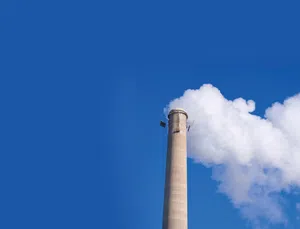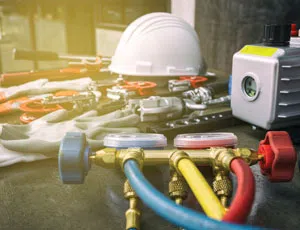The average consumer won't know it when it happens in her car's AC system, home refrigerator or supermarket freezer aisle, but the shift will be significant: the replacement of hydrofluorocarbons (HFCs) with a class of more environmentally sustainable, lower global warming potential refrigerant hydrofluoroolefin (HFO) solutions. The changeover won't happen overnight — it will be part of a phase-down that will take several years — but if recent regulatory moves are any indication, 2015 may end up being the tipping point in the push toward HFOs.
The case for this next generation of refrigerants is clear. HFC-134a, the most common refrigerant in use today, contributes to global warming when it escapes from sealed systems through leaks, servicing, and disposal. It has a global warming potential (GWP) of greater than 1,300 and can persist in the atmosphere for years. HFOs, by contrast, have a GWP of less than 2, zero ozone depletion, and a lifetime measured in days.
Yet while HFO's benefits over HFCs are clear, regulation hadn't yet followed — until this year. On Jan. 1, 2015 the European Union (EU) new F-gas Regulation went into effect, limiting the amount of HFCs that can be placed on the market in the EU. Then, in July, the U.S. Environmental Protection Agency followed suit when it finalized a rule to change the status of certain uses of HFCs and HFC-containing blends in motor vehicle air conditioning, retail food refrigeration, vending machines, aerosols and foams to unacceptable. .
As 2015 comes to a close, at the 21st Conference of the Parties (COP21) to the UN Framework Convention on Climate Change (UNFCCC), the Parties approved the landmark international climate agreement or "The Paris Agreement". The goal of the agreement is to limit the global average temperature increase to well below 2C above pre-industrial levels and pursuing efforts to limit the temperature increase to 1.5C.
Transition to low GWP alternatives like HFOs will be an important part of the global solution. Emissions are on the rise even though alternatives now exist. In the U.S. alone, the EPA says, HFC emissions are expected to nearly double by 2020 and triple by 2030. The agency's new rule will push businesses toward new technologies and climate-friendly refrigerants, including alternatives approved under the Significant New Alternatives Policy (SNAP) Program, and will reduce greenhouse gas emissions of 54 to 64 million metric tons of carbon dioxide equivalent in 2025, the EPA says.
HFO refrigerant solutions will be essential to meet the needs of our growing, changing world. At Chemours, we're building our future around providing solutions the world needs. In 2014, our Opteon XP40, a low-GWP refrigerant, was selected by Ahold as the preferred low-GWP solution to meet European F-gas regulations and was installed in over 200 Ahold supermarkets across the Netherlands; In 2016, we estimate over 1000 supermarkets in the European Union will be using Opteon XP40. Meanwhile HFO-1234yf, including our Opteon YF, will be in the air conditioning systems of more than 18 million cars worldwide by the end of this year. We anticipate our Opteon product family will reduce greenhouse gas content by 300million tons CO2 equivalent worldwide by 2025.
These applications are a big step forward, but they're just the beginning. We're now exploring the next phase: using HFOs in high-temperature heat pumps, building and warehouse air conditioning systems and insulation, and many other stops along the way from farm to fork.
These last couple of year, the shift to HFOs gained critical momentum. The transition may go unnoticed by consumers, but the benefits will resound throughout the refrigeration industry — and the global environment.
 Joseph Martinko is global business manager, Opteon products, for Chemours. Please visit chemours.com for additional information.
Joseph Martinko is global business manager, Opteon products, for Chemours. Please visit chemours.com for additional information.


 Joseph Martinko is global business manager, Opteon products, for Chemours. Please visit
Joseph Martinko is global business manager, Opteon products, for Chemours. Please visit 


